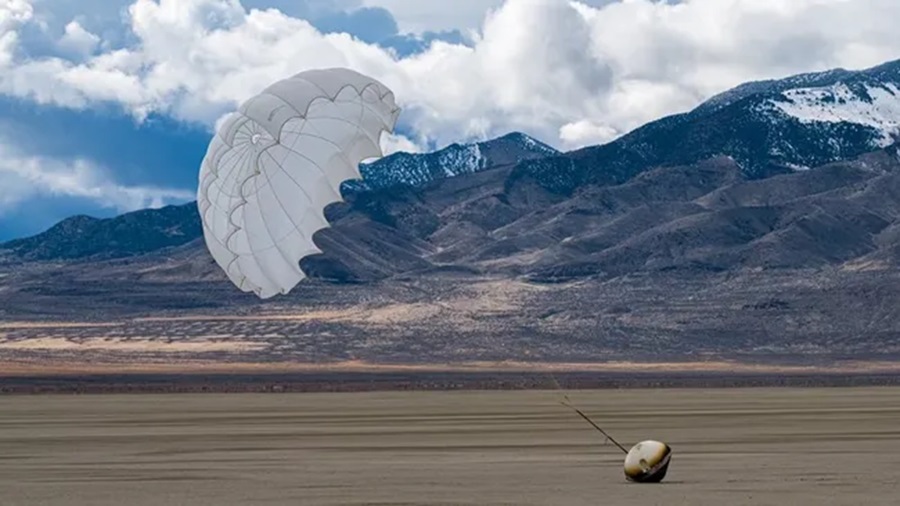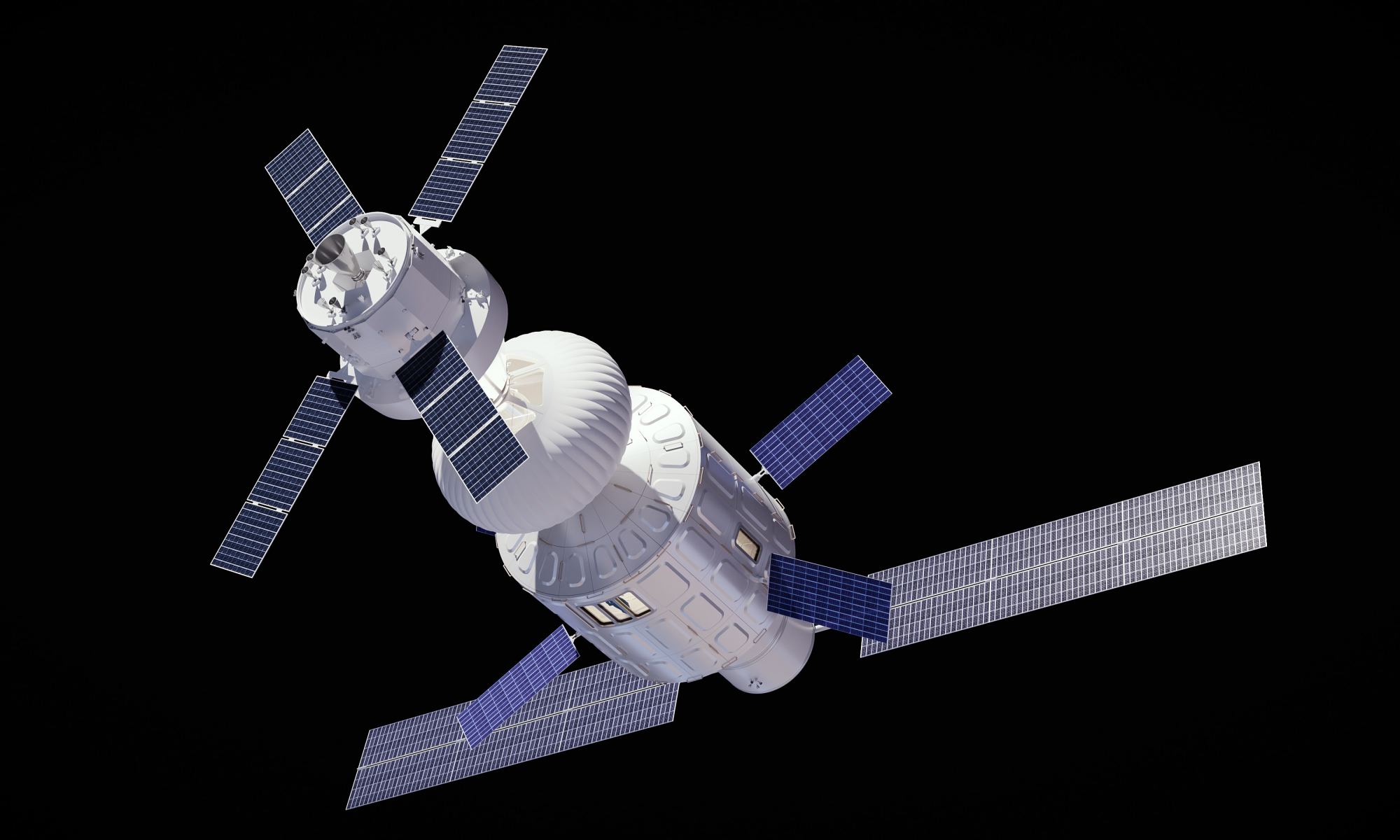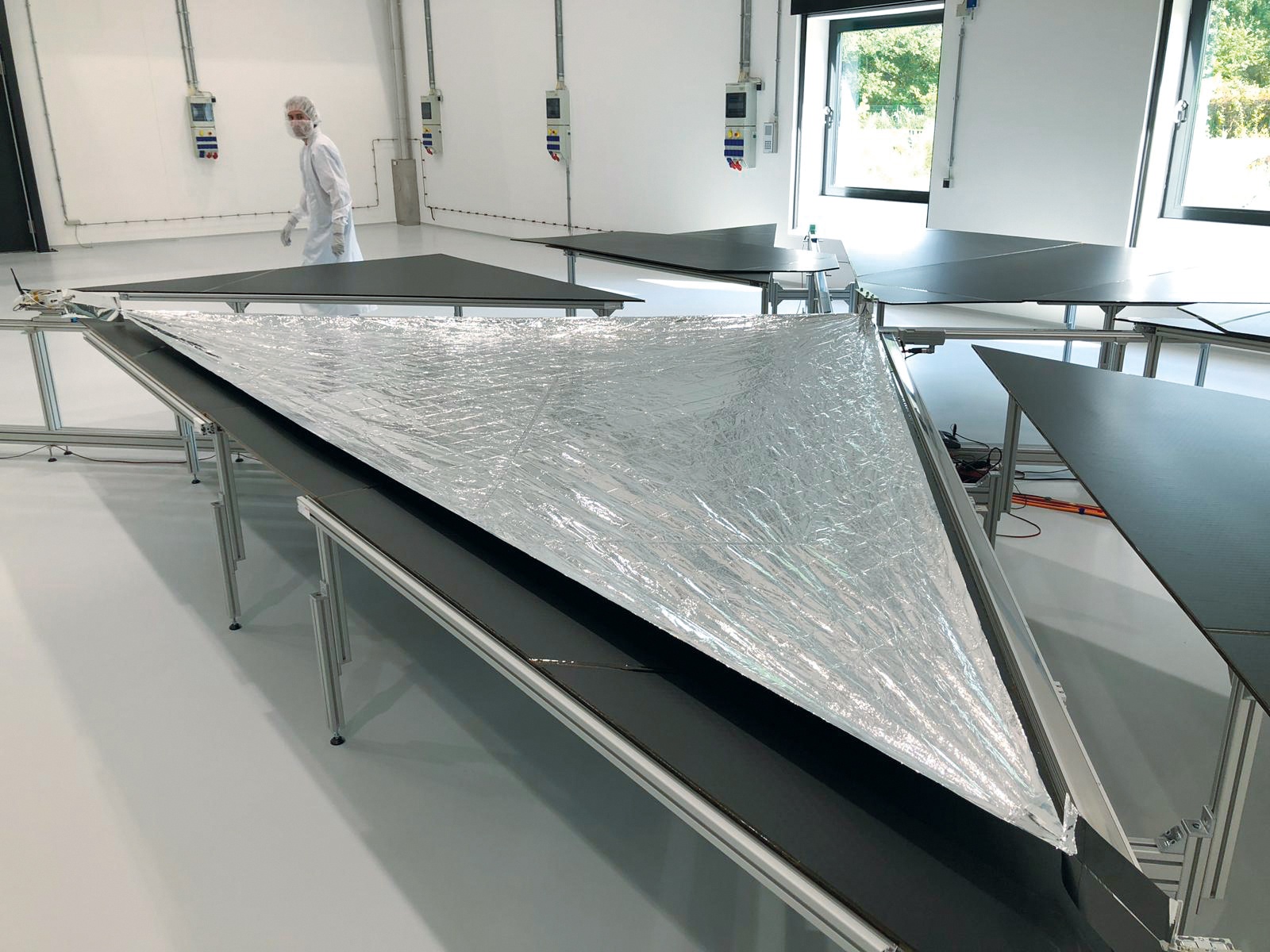On Wednesday, February 21st, at 01:40 p.m. PST (04:40 p.m. EST), an interesting package returned to Earth from space. This was the capsule from the W-1 mission, an orbital platform manufactured by California-based Varda Space Industries, which landed at the Utah Test and Training Range (UTTR). Even more interesting was the payload, which consisted of antiviral drugs grown in the microgravity environment of Low Earth Orbit (LEO). The mission is part of the company’s goal to develop the infrastructure to make LEO more accessible to commercial industries.
Continue reading “A Capsule With Antiviral Drugs Grown in Space Returns to Earth”How Can Astronauts Maintain Their Bodies With Minimal Equipment?

Decades of research aboard the International Space Station (ISS) and other spacecraft in Low Earth Orbit (LEO) have shown that long-duration stays in microgravity will take a toll on human physiology. Among the most notable effects are muscle atrophy and bone density loss and effects on eyesight, blood flow, and cardiovascular health. However, as research like NASA’s Twin Study showed, the effects extend to organ function, psychological effects, and gene expression. Mitigating these effects is vital for future missions to the Moon, Mars, and other deep-space destinations.
To reduce the impact of microgravity, astronauts aboard the ISS rely on a strict regiment of resistance training, proper diet, and cardiovascular exercise to engage their muscles, bones, and other connective tissues that comprise their musculoskeletal systems. Unfortunately, the machines aboard the ISS are too large and heavy to bring aboard spacecraft for long-duration spaceflights, where space and mass requirements are limited. To address this, NASA is investigating whether exercise regimens that rely on minimal or no equipment could provide adequate physical activity.
Continue reading “How Can Astronauts Maintain Their Bodies With Minimal Equipment?”Airbus Designs a Space Station With Artificial Gravity
The International Space Station (ISS) is nearing the end of its service. While NASA and its partners have committed to keeping it in operation until 2030, plans are already in place for successor space stations that will carry on the ISS’ legacy. China plans to assume a leading role with Tiangong, while the India Space Research Organization (ISRO) plans to deploy its own space station by mid-decade. NASA has also contracted with three aerospace companies to design commercial space stations, including Blue Origin’s Orbital Reef, the Axiom Space Station (AxS), and Starlab.
Well, buckle up! The European multinational aerospace giant Airbus has thrown its hat into the ring! In a recently-released video, the company detailed its proposal for a Multi-Purpose Orbital Module (MPOP) called the Airbus LOOP. This modular space segment contains three decks, a centrifuge, and enough volume for a crew of four, making it suitable for future space stations and long-duration missions to Mars. The LOOP builds on the company’s long history of human spaceflight programs, like the ISS Columbus Module, the Automated Transfer Vehicle (ATV), and the Orion European Service Module (ESM).
Continue reading “Airbus Designs a Space Station With Artificial Gravity”China uses drag sail to clear up space junk successfully.
Scientists at the Shanghai Academy of Spaceflight Technology (SAST) have devised an ingenious way to combat the growing problem of space debris. The team fitted a drag sail to a Long March 2 rocket and successfully launched it in July this year. Rocket launches often leave discarded booster stages in low-earth orbit, adding to the pollution of near-earth space. The pilot testing for the sail came as a surprise to many space agencies when, a day after the rocket’s launch, the 25 square meters deorbiting sail was unfolded.
There’s a Problem With Hubble, and NASA Hasn’t Been Able to fix it yet
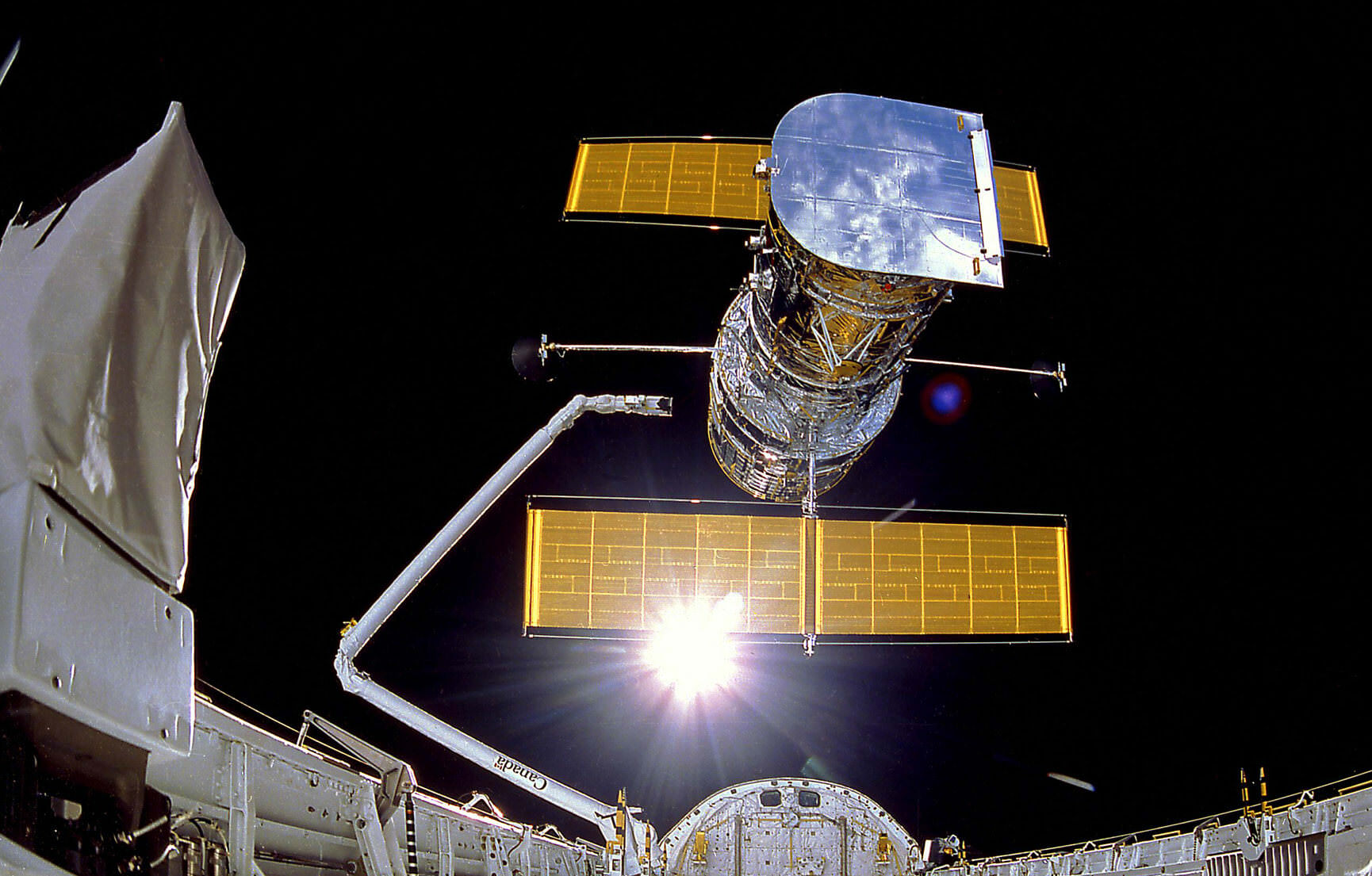
For over thirty years, the Hubble Space Telescope has been in continuous operation in Low Earth Orbit (LEO) and revealing never-before-seen aspects of the Universe. In addition to capturing breathtaking images of our Solar System and discovering extrasolar planets, Hubble also probed the deepest reaches of time and space, causing astrophysicists to revise many of their previously-held theories about the cosmos.
Unfortunately, Hubble may finally be reaching the end of its lifespan. In recent weeks, NASA identified a problem with the telescope’s payload computer which suddenly stopped working. This caused Hubble and all of its scientific instruments to go into safe mode and shut down. After many days of tests and checks, technicians at the NASA Goddard Space Flight Center have yet to identify the root of the problem and get Hubble back online.
Continue reading “There’s a Problem With Hubble, and NASA Hasn’t Been Able to fix it yet”This is What an Air-Breathing Electric Thruster’s Intake Would Look Like
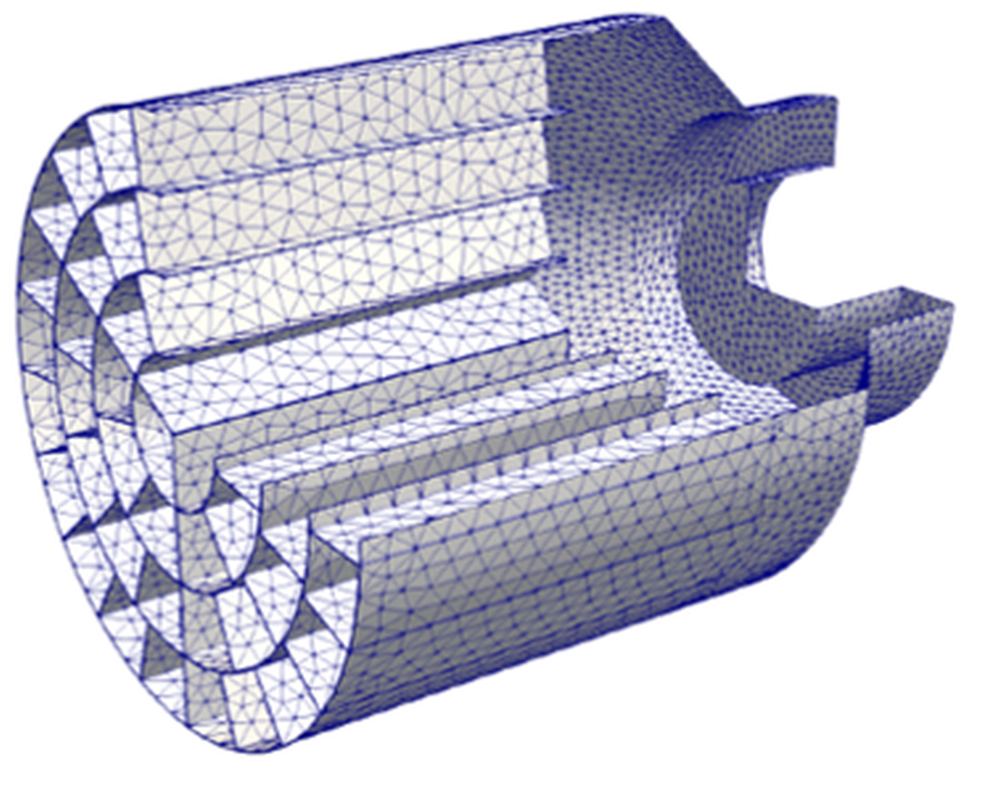
Like all other technologies, satellite technology has grown in leaps and bounds in the past couple decades. Satellites can monitor Earth in increasingly high resolutions, aiding everything from storm forecasting, to climate change monitoring, to predicting crop harvests. But there’s one thing still holding satellites back: altitude.
Continue reading “This is What an Air-Breathing Electric Thruster’s Intake Would Look Like”Gateway Foundation Shows off Their Plans for an Enormous Rotating Space Station

Since the end of the Apollo-era, one of the main goals of NASA, Roscosmos and other space agencies has been the development of technologies that will enable a long-term human presence in space. These technologies will also help when it comes time to mount renewed missions to the Moon, to Mars, and other locations in the Solar System. Over the past few decades, these efforts have yielded Mir and the International Space Station (ISS).
In the coming years, these efforts will also lead to the Lunar Orbital Platform-Gateway and commercial space stations – like the Bigelow B330. And if private aerospace companies like the Gateway Foundation get their way, we’ll also have a spaceport in orbit around Earth. The company recently posted a video showing exactly what this rotating wheel space station will look like, and how companies like SpaceX could help build it.
Continue reading “Gateway Foundation Shows off Their Plans for an Enormous Rotating Space Station”Look at This Adorable Pen-Sized Booster, Perfect for Tiny Satellites
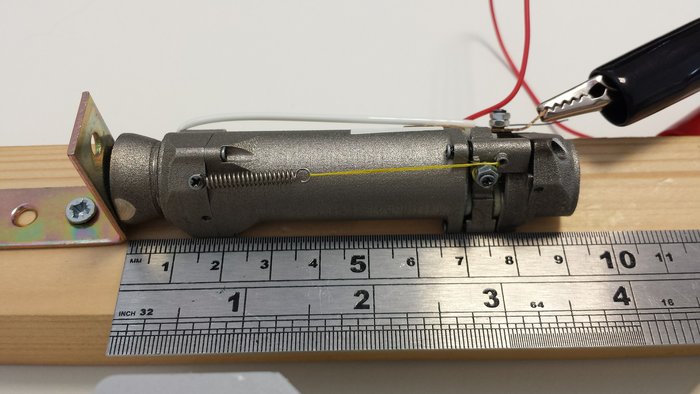
When it comes to space exploration, the motto “keep it simple” isn’t always followed! For the most part, satellites, spacecraft, telescopes, and the many other technologies that allow humans to study and explore the Universe are the result of highly-technical and complex feats of engineering. But sometimes, it is the simplest ideas that offer the most innovative solutions.
This is especially true when it comes to the today’s space agencies, who are concerned with cutting costs and increasing accessibility to space. A good example is the Fenix propulsion system, a proposal created by Italian tech company D-Orbit. As part of the last year’s Space Exploration Masters, this pen-sized booster will allow CubeSats to maneuver and accomplish more in space.
The Space Exploration Masters, which the European Space Agency (ESA) initiated in 2017, seeks to encourage space-based innovation and provide opportunities for commercial development. As such, this annual competition has become central to the implementation of the ESA Space Exploration strategy. For their application last year, D-Orbit was jointly awarded the the ESA and Space Application Services prize.
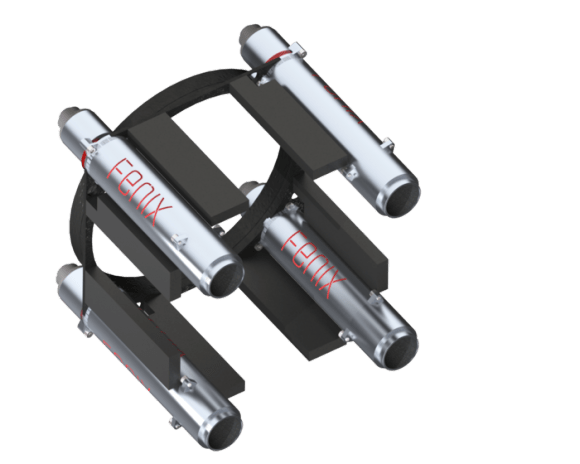
The thruster prototype itself measures only 10 cm long and 2 cm wide (~4 by 0.8 inches) and contain solid propellant that is triggered by a simple electrical ignition system. The boosters are designed to be placed at each corner of a 10 x 10 x 10 cm CubeSat, or can be doubled up for added thrust. Thanks to their lightweight and compact size, they do not take up much instrument space or add significantly to a CubeSat’s weight.
Currently, CubeSats are deployed directly into space, deorbit at the end of their missions, and have no means to change their orbits. But with this simple, chemical-propellant thruster, CubeSats could function for longer periods and would be able to take on more complicated missions. For instance, if they can maneuver in orbit, they will be able to study the Moon and asteroids from different angles.
In addition, boosters will allow CubeSats to deorbit themselves once they are finished their missions, thus reducing the threat of space debris. According to the latest report from the Space Debris Office at the European Space Operations Center (ESOC), an estimated 19,894 bits of space junk were circling our planet by the end of 2017, with a combined mass of at least 8135 metric tons (8967 US tons). This problem is only expected to get worse.
In fact, it is estimated that the small satellite market will grow by $5.3 billion in the next decade (according to Space Works and Eurostat) and many private companies are looking to provide regular launch services to accommodate that growth. As such, a propulsion system that not only presents opportunities to do more with CubeSats, but in a way that will not add to problem of space debris, will be highly sought-after.
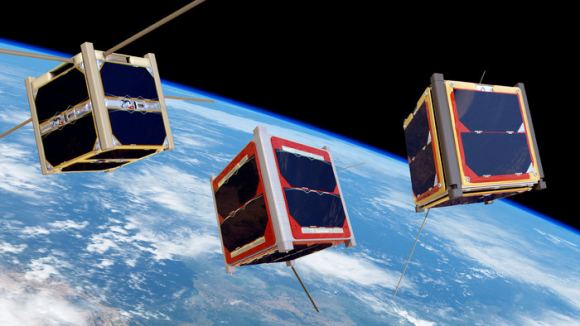
In addition to the ESA and Space Application Services prize, D-Orbit won a four-month ticket to test their prototype on the newly-installed ICE Cubes facility, which is located in the Columbus module aboard the International Space Station. This facility is the first European commercial research center to operate aboard the ISS, and the D-Orbit team will use to test the booster’s safe ignition mechanism inside an ICE cube experiment.
This experiment, which will not involve firing the actual propulsion system, will help ensure that the booster can operate safe and effectively in space. Sensors and cameras will record the sparks, triggered by an electrical impulse, while the team relies on the ICE Cubes facility’s dedicated control center to provide them with remote viewing opportunities from the ground.
The Fenix boosters are set to launch for the ISS by the end of next year and, if successful, D-Orbit will likely secure permission to test their propulsion system in space. And if all goes well, future generations of CubeSats – which have already made Low Earth Orbit (LEO) accessible to private companies and research institutes – will be capable of performing far more tasks in orbit.
For this year’s Space Exploration Masters, the ESA is partnering with the United Nations World Health Organization (WHO) to address health and food. For the main challenge, participants will be tasked with coming up with applications that promote nutritious food and food security, both on- and 0ff-planet. Among other challenges, this year’s SEM will also be looking for ideas that make missions more sustainable and new ways to use future spacecraft.
For more information on this year’s Space Exploration Masters, check out the ESA website page.
Further Reading: ESA
This is the Year Internet From Space Gets Really Serious

Between 2005 and 2017, the number of people who are digitally connected increased by a factor of three and a half. In other words, the number of people with internet access went from just over 1 billion to about 3.5, from about 15% to roughly half the world’s population. And in the coming decade, it is estimated that roughly 5 billion people – that’s 70% of the world’s population – will have internet access.
Much is this growth is powered by new ways of in which internet services are being provided, which in the coming years will include space-based internet. In 2018 alone, eight new constellations of internet satellites will begin deployment to Low-Earth Orbit (LEO) and Medium-Earth Orbit (MEO). Once operational, these constellations are expected to not only increas broadband access, but also demonstrate the soundness of the business model.
For instance, SpaceX will be launching a prototype internet satellite this year, the first of a planned constellation of 4,425 satellites that will make up its Starlink Service. As part of Elon Musk’s vision to bring internet access to the entire globe (one of many he’s had in recent years!), this constellation will be deployed to altitudes of 1,110 to 1,325 km (685-823 mi) – i.e. within LEO – by 2024.
Telecom and aerospace giants Samsung and Boeing are also sending internet satellites to orbit this year. In Samsung’s case, the plan is to begin deploying the first of 4,600 satellites to LEO by 2028. Once operational, this interconnected constellation will provide a 200-GB per month service in the V band for up to 5 billion users. Boeing has similar plans for a 2,956 constellation that will provide enhanced broadband (also in the V band).
The first part of this system will consist of 1,396 satellites deployed to an altitude of 1,200 km (746 mi) within the first six years. Others companies that are getting in on the ground floor of the space-based internet trend include OneWeb, Telesat LEO, SES O3B, Iridium Next and LeoSat. Each of them have plans to send between a few dozen and a few hundred satellites to LEO to enhance global bandwidth, starting this year.
Iridium, LeoSat, and SES O3B have all entered into partnerships with Thales Alenia Space, a leading designer of telecommunication and navigation satellites as well as orbital infrastructure. Thales’ resume also includes providing parts and services for the International Space Station, as well as playing major role in the development of the ATV cargo vessel, as part of the NASA/ESA Cygnus program.
In conjunction with Thales and Boeing, SES 03b plans to use its proposed constellation of 27 satellites to bridge the global digital divide. In the past, O3b was in the practice of providing cruise ships with wireless access. After merging with SES in 2016, they expanded their vision to include geosynchronous-Earth-oribit and MEO satellites. The company plans to have all its satellites operational by 2021.
Iridium is also partnering with Orbital ATK, the commercial aerospace company, to make their constellation happen. And whereas other companies are focused on providing enhanced bandwidth and access, Iridium’s main goal is to provide safety services for cockpit Wi-Fi. These services will be restricted to non-passenger flights for the time being, and will operate in the L and Ka bands.
And the there’s LeoSat’s plan to send up to 108 satellites to LEO which will be interconnected through laser links to provide what they describe as “an optical backbone in space about 1.5 times faster than terrestrial fiber backbones”. The first of these small, high-throughput satellites – which will deliver services in the Ka-band – is scheduled to launch in 2019.
Similarly, Telesat LEO hopes to create an internet satellite network to provide services that are comparable to fiber-optic internet connections. According to the company, their services will target “busy airports; military operations on land, sea and air; major shipping ports; large, remote communities; and other areas of concentrated demand.” The company plans to deploy two prototype satellites to LEO later this year, which were developed in conjunction with Airbus’ SSTL and Space Systems Loral.
With all the developments taking place these days, it does seem like the dream of a global internet (much like the Internet of Things (IoT) is fast becoming a reality. In the coming decades, we may look back at the late 20th and early 21st centuries the same way we look at the stone ages. Compared to a world where almost everyone has internet access and can download, upload, stream and surf, a world where only a few million people could do that will seem quite primitive!
Featured: Aviation Week, Popular Mechanics
This is the Strangest Idea Ever for a Spacecraft Propulsion System: Ferrofluids

When it comes to the future of space exploration, some truly interesting concepts are being developed. Hoping to reach farther and reduce associated costs, one of the overarching goals is to find more fuel-efficient and effective means of sending robotic spacecraft, satellites and even crewed missions to their destinations. Towards this end, ideas like nuclear propulsion, ion engines and even antimatter are all being considered.
But this idea has to be the strangest one to date! It’s known as a ferrofluid thruster, a new concept that relies on ionic fluids that become strongly magnetized and release ions when exposed to a magnetic field. According to a new study produced by researchers from the Ion Space Propulsion Laboratory at Michigan Tech, this concept could very well be the future of satellite propulsion.
This study, which was recently published in the journal Physics of Fluids, presents an entirely new method for creating microthrusters – tiny nozzles that are used by small satellites to maneuver in orbit. Thanks to improvements in technology, small satellites – which are typically defined as those that weight less than 500 km (1,100 lbs) – can perform tasks that were once reserved for larger ones.
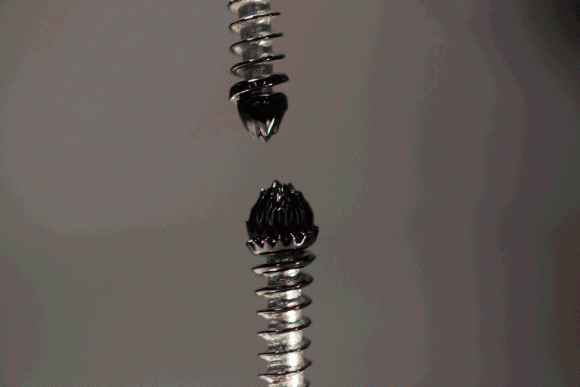
As such, they are making up an increasingly large share of the satellite market, and many more are expected to be launched in the near future. In fact, it is estimated that between 2015 and 2019, over 500 small satellites will be launched to LEO, with an estimated market value of $7.4 billion. Little wonder then why researchers are looking at various types of microthrusters to ensure that these satellites can maneuver effectively.
While there are no shortage of possibilities, finding the one that balances cost-effectiveness and reliability has been difficult. To address this, an MTU research team began conducting a study that considered ferrofluids as a possible solution. As noted, ferrofluids are ionic liquids that become active when exposed to a magnetic field, forming peaks that emit small amounts of ions.
These peaks then return to a natural state when the magnetic field is removed, a phenomena known as Rosenweig instability. Led by Brandon A. Jackson – a doctoral candidate in mechanical engineering at Michigan Technological University – the MTU research team began to consider how this could be turned into propulsion. Other members included fellow doctoral candidate Kurt Terhune and Professor Lyon B. King.
Prof. King, the Ron & Elaine Starr Professor in Space Systems at Michigan Tech, has been researching the physics of ferrofluids for many years, thanks to support provided by the Air Force Office of Scientific Research (AFOSR). In 2012, he proposed using such ionic fluids to create a microthruster for modern satellites, based on previous studies conducted by researchers at the University of Sydney.
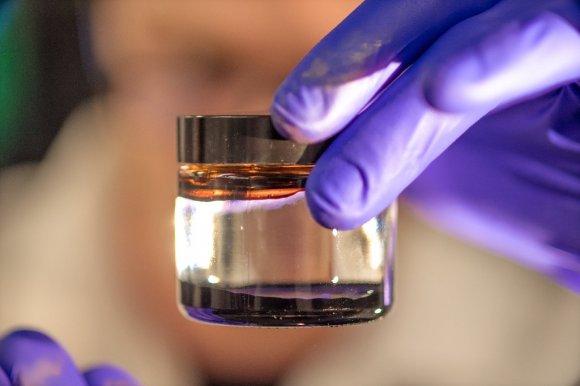
As he explained in a MTU press release, this method offers a simple and effective way to create a reliable microthruster:
“We’re working with a unique material called an ionic liquid ferrofluid. When we put a magnet underneath a small pool of the ferrofluid, it turns into a beautiful hedgehog structure of aligned peaks. When we apply a strong electric field to that array of peaks, each one emits an individual micro-jet of ions.”
With King’s help, who oversees MTU’s Ion Space Propulsion Laboratory, Jackson and Tehrune began conducting an an experimental and computational study on the dynamics of the ferrofluid. From this, they created a computational model that taught them much about the relationships between magnetic, electric and surface tension stresses, and were even surprised by some of what they saw.
“We wanted to learn what led up to emission instability in one single peak of the ferrofluid microthruster,” said Jackson. “We learned that the magnetic field has a large effect in preconditioning the fluid electric stress.”
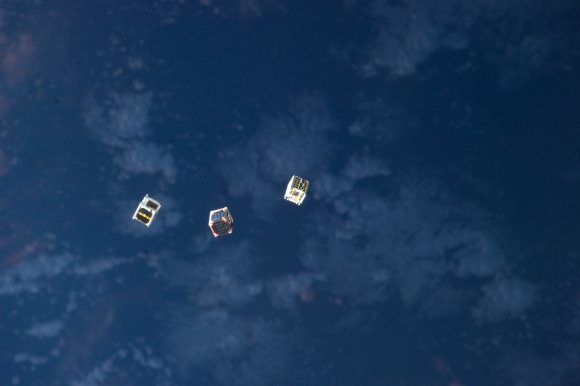
Ultimately, what they had created was a model for an electrospray ionic liquid ferrofluid thruster. Unlike conventional electrospray thrusters – which generate propulsion with electrical charges that send tiny jets of fluid through microscopic needles – a ferrofluid electrospray thruster would be able to do away with these needles, which are expensive to manufacture and vulnerable to damage.
Instead, the thruster they are proposing would be able to assemble itself out of its own propellant, would rely on no fragile parts, and would essentially be indestructible. It would also present advantages over conventional plasma thrusters, which are apparently unreliable when scaled down for small satellites. With the success of their model, the AFOSR recently decided to award King a second contract to continue studying ferrofluids.
With this funding secured, King is confident that they can put what they learned with this study to good use, and scale it up to examine what happens with multiple peaks. As he explained:
“Often in the lab we’ll have one peak working and 99 others loafing. Brandon’s model will be a vital tool for the team going forward. If we are successful, our thruster will enable small inexpensive satellites with their own propulsion to be mass produced. That could improve remote sensing for better climate modeling, or provide better internet connectivity, which three billion people in the world still do not have.”
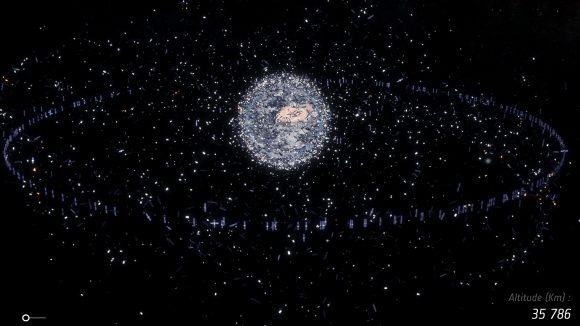
Looking ahead, the team wants to conduct experiments on how an actual thruster might perform. The team has also begun working with Professor Juan Fernandez de la Mora of Yale University, one of the world’s leading experts on electrospray propulsion, to help bring their proposal to fruition. Naturally, it will take many years before a prototype is ready, and such a thruster would likely have to be able to execute about 100 peaks to be considered viable.
Nevertheless, the technology holds promise for a market that is expected to grow by leaps and bounds in the coming years and decades. Facilitating everything from worldwide internet access and telecommunications to scientific research, there is likely to be no shortage of smallsats, cubesats, nanosats, etc. taking to space very soon. They will all need to have reliable propulsion if they want to be able to stay clear of each other do their jobs!
Michigan Tech also has patents pending for the technology, which has applications that go beyond propulsion to include spectrometry, pharmaceuticals, and nanofabrication.
Further Reading: MTU, Physics of Fluids

